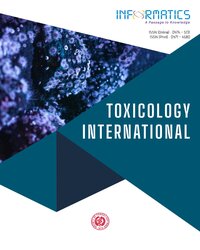Investigation of Human Health Risks Influenced by Trace Metals (TMs) in Chili Plant (Capsicum annuum L.) Grown on Tannery Effluents Contaminated Soil
Subscribe/Renew Journal
This study investigated the characteristics of tannery effluents of Hazaribagh area, Dhaka, Bangladesh, as well as assess the human health risks due to the accumulation and translocation of trace metals (TMs) in different parts of the chili plant (Capsicum annuum L.) grown on tannery effluents contaminated soil at three levels of contamination. The mean values of pH, TDS, EC, DO, turbidity, BOD, and TOC were 5.98, 4195 mg/L, 7950 µS/cm, 3.20 mg/L, 358 FTU, 660 mg/L and 3368.74 mg/L, respectively whereas the mean concentration of Cr, Pb, Fe, Zn, Cd, Mn and Cu was 374.40, 27.70, 26.06, 1.80, 1.27, 1.26 and 1.24 mg/L, correspondingly. The TMs constituents and water quality parameters in the tannery effluents exceeded both the national and international standards. A significant amount of Cr and Pb was traced in fruits of the medium and low level of contamination that exceeded the standard limit set by FAO/WHO. The highest transfer factor was found on Pb and it was mostly accumulated in the leaves. Cr and Pb concentrations in fruits of medium level exceeded the standard given by WHO/FAO/ SEPA. Although the daily intake of metals in combination with health and carcinogenic risk indexes indicated that the edible parts of Chili plants are within the safe limit, the potential human health risks cannot be abandoned for the consistent/long term consumption of TMs contained Chili plants (Capsicum annuum L.).
Keywords
Bangladesh, Carcinogenic Risks, Tannery Wastewater, BCF, DIM, HRI.
User
Subscription
Login to verify subscription
Font Size
Information



